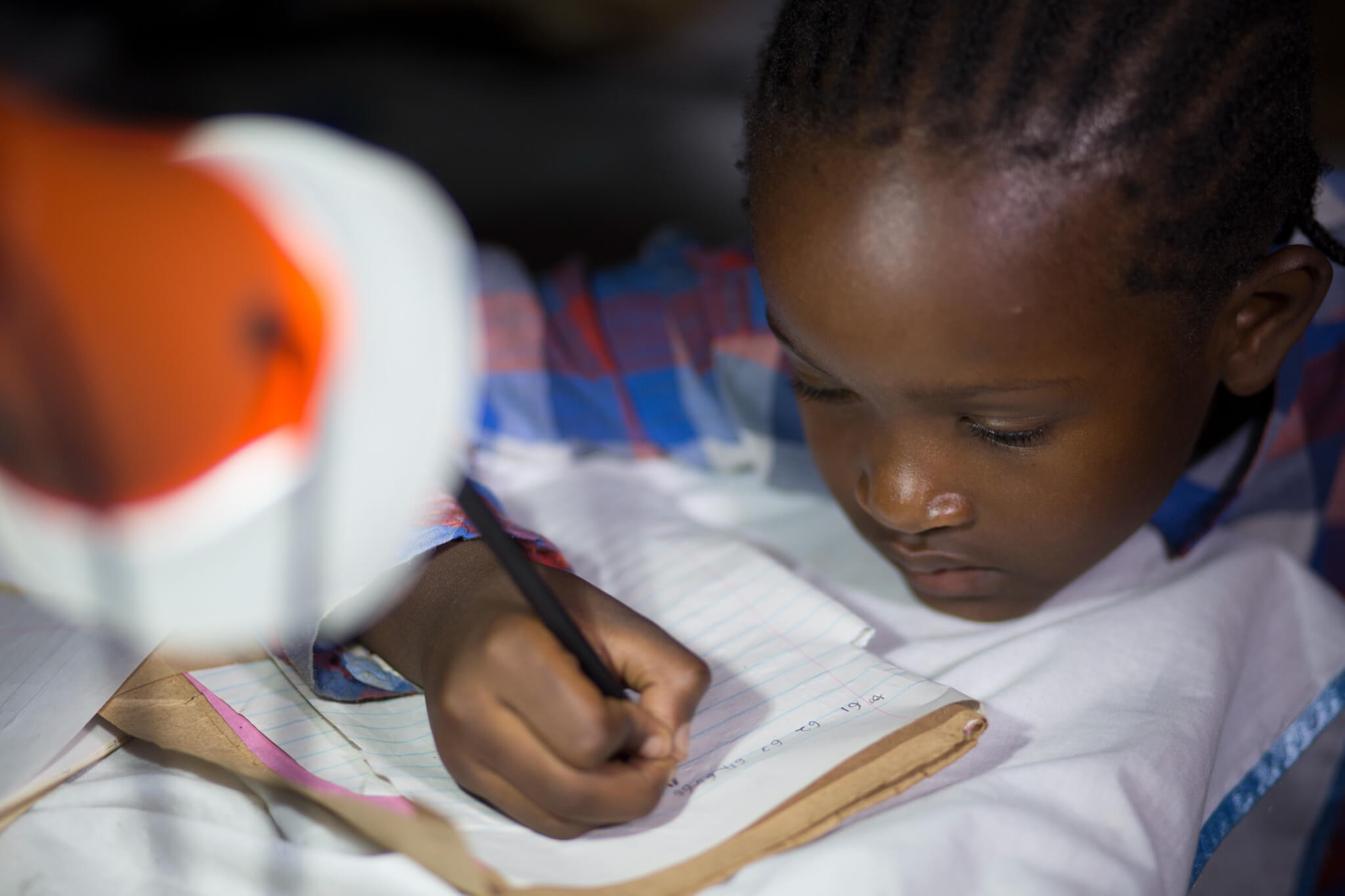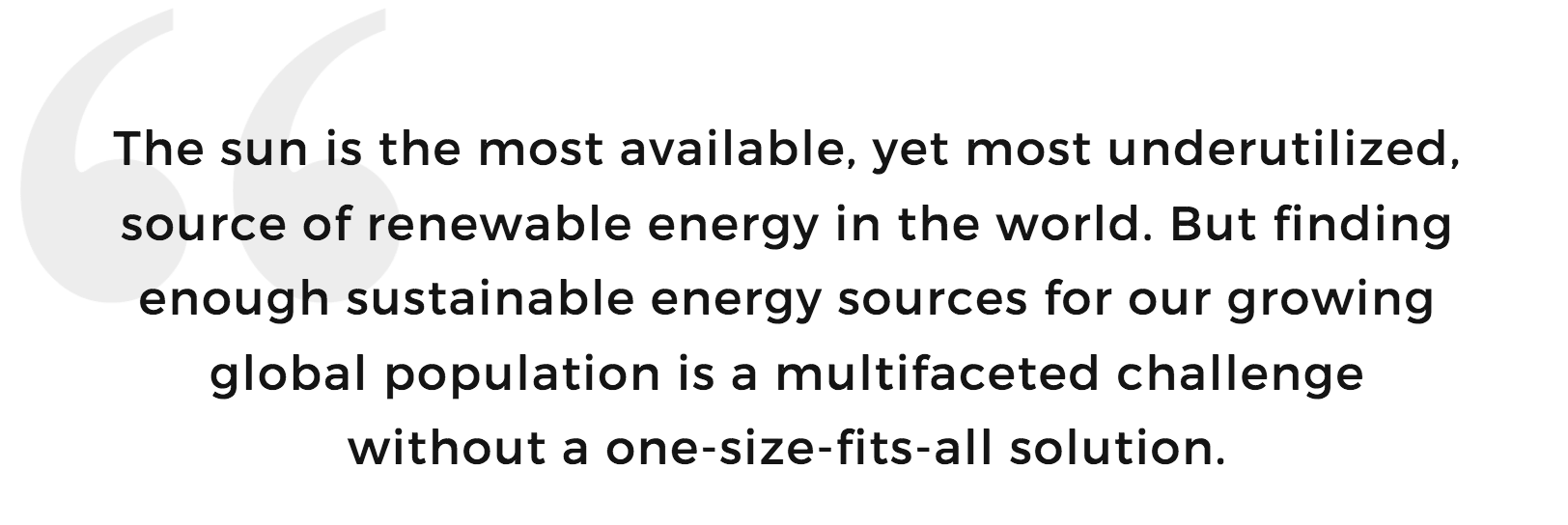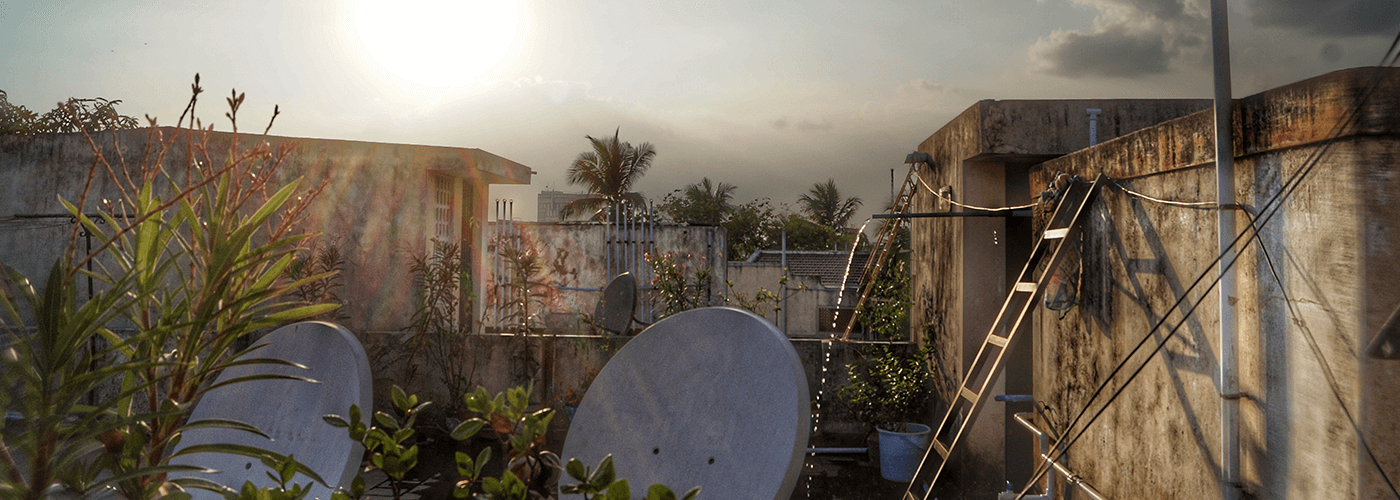 n August 21, 2017, the United States will experience a total solar eclipse, the first such event in thirty-eight years. But, with the U.S. increasingly reliant on solar power, the eclipse will disrupt more than a few hours of daylight.
n August 21, 2017, the United States will experience a total solar eclipse, the first such event in thirty-eight years. But, with the U.S. increasingly reliant on solar power, the eclipse will disrupt more than a few hours of daylight.
The U.S. Energy Information Administration estimates that the coming eclipse will knock out about 70 megawatts (MW) of solar-generated power per minute. This means a total shortfall of as much as 6,000 MW. That’s a lot of energy—enough to power at least 3 million homes.
The Multi-Faceted Challenge of Energy
The sun is the most available, yet most underutilized, source of renewable energy in the world. But finding enough sustainable energy sources for our growing global population is a multifaceted challenge without a one-size-fits-all solution. Countries that have near 100 percent access to electricity, like China, as well as those with 8 percent access, like Chad, have an energy problem. The difference is the nature of the problem.
For instance, China relies heavily on coal to generate electricity. Coal may be cheap, but it is neither renewable nor good for the environment. In the same way, countries like Brazil, Canada, and the U.S. generate clean energy through hydroelectricity, but this approach has often proven to be too expensive and therefore equally unsustainable.
The increasing global thirst for energy affects all of us, whether we live in an area with maximum or minimum grid coverage. Any viable solution, therefore, has to consider the economic and social contexts of various communities.

Selling solar home systems to households without access to electricity is no good if potential customers cannot afford the products. To be effective, the energy solution provider must understand solar technology and know-how to address economic obstacles to accessing that energy.
How can we approach a problem that stretches across multiple areas of economic and social development? We need practical, customizable solutions that cater to all facets of the complex problem.
A Customized Approach to a Global Problem
The reality is that an energy problem is a financial problem is a health problem is an industrial problem is a drought problem is an environmental problem. None of these can be solved in isolation. In other words, we need everyone on board.
At d.light, we have addressed this challenge through various innovative strategies. We have strongly focused on overcoming the affordability barrier for our customers, working hard to get to extremely affordable price points with short payback periods. For instance, our entry-level solar lantern, the A1, replaces a kerosene lamp and is priced at about $5, which in many countries is less than the monthly household cost of kerosene.
For larger solar home systems, d.light provides consumer financing solutions that allow customers to pay in installments similar to what they were already paying for energy. We collaborate with microfinance institutions (MFIs) and have also incorporated Pay-As-You-Go technology in our products, enabling us to remotely lock or unlock products based on customers’ payments. By making solar home systems more affordable, the demand for these systems has exploded in the markets where we work.
 Making solar lanterns and solar home systems extremely affordable across a wide scale required deep collaboration between the supply chain, distribution channels, and financing partners. As we have found, the complexity of the challenge encourages us to partner with other organizations to discover the best, most adaptable and scalable solutions.
Making solar lanterns and solar home systems extremely affordable across a wide scale required deep collaboration between the supply chain, distribution channels, and financing partners. As we have found, the complexity of the challenge encourages us to partner with other organizations to discover the best, most adaptable and scalable solutions.
The good news is that providing sustainable energy solutions to off-grid families can positively impact many other aspects of their lives, including productivity, education, and health. When I visit a customer’s home, I often find that being able to upgrade from kerosene lamps to a full solar solution leads to improved educational outcomes, better respiratory health, and higher income due to greater productivity.
No matter what sector of development we are in, our joint efforts are necessary for achieving the goal of energy access for all. The challenge is not just technological, but also economic, political, and social. The solution will require the input of governments, corporations, and individuals.
Fortunately, trends in technology and costs are all moving in the right direction, and I wholeheartedly believe that the global energy problem is solvable. We can create a much brighter future together, in which energy is available to everyone in a way that is sustainable for our planet.



